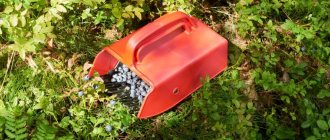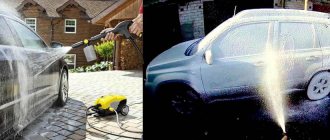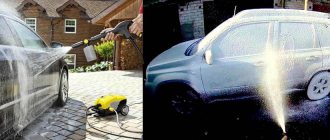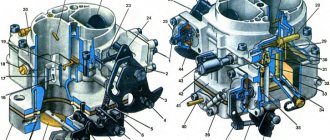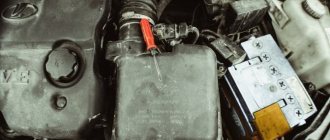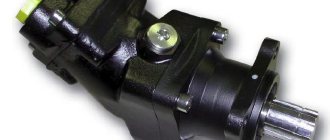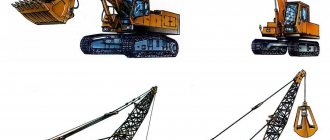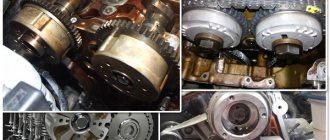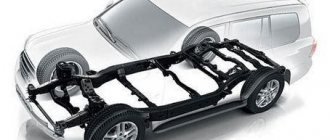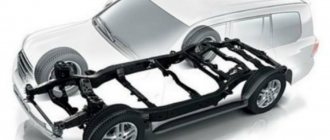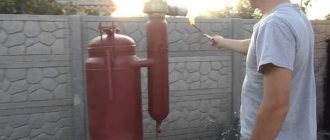A modern spray gun, depending on the type, can differ significantly in design and design, and have a manual, pneumatic or electric drive. The popularity of these devices is great, because they are capable of spraying water, disinfectant liquid, paints and varnishes, and plant care products.
Compact sprayer for indoor plants. Advantages and disadvantages.
I have a lot of plants at home.
I love them and cats love them too. My youngest, Tosha, is an expert in violets and glaxinias (too bad, I have to block access with other flowers), my oldest, Nika, is an expert in palm trees and money trees (she tries to climb them, and this is fatal for flowers).
And in my apartment, when the heating is not turned off, the air is very dry. Yes, there is a good humidifier that is in a large room, but I have flowers everywhere - both in the kitchen and in the bedroom, so the humidifier is simply not enough.
We have to find alternative ways to care for flowers. Spraying them is one of these methods.
At the same time, sprayers in flower shops and Okey cost on average around 100 rubles .
So why did I get carried away again to Ali?
Firstly: I get cashback with every order.
Secondly, with the same pricing policy on Ali, you can find things that are more interesting in appearance than what is sold here.
That's exactly what happened with this cute spray bottle.
For comparison, a green spray bottle was purchased in Okey for 102 rubles. Ordinary. There is no difference in quality.
The spray bottle with Ali came in two colors: I kept one for myself - milky pearl with pink, and gave the other to a friend, she also has an impenetrable jungle in her apartment. And a normal cat that doesn’t eat flowers and doesn’t go to the toilet with violet flowers, like some.
Spray material:
Height is about 20 cm, width is about 8 cm in diameter. Compact, lightweight, convenient.
Modes of use:
On the sprayer itself, the modes are not highlighted, as on more expensive sprayers - there is an off mode, a fine stream and a drip spray.
There are two modes of using the sprayer:
Actually, a thin stream under pressure (I don’t know what it’s for, perhaps just to scare cats away from plants, nothing else comes to mind).
He squeaked once over the ears of the plant marauder, and fought off the desire to crunch the green chlorophyll organism.
And the second mode is spraying, which, in principle, is used for spraying indoor plants. Again, a gentle punishment regime for cats if they only sneak up on the flowers, and do not brazenly, looking you straight in the eyes, pull out the glaxinya bell. And this happened). The flower simply died and refused to grow further. So Totofan (Tosha) is my glaxinia fighter.
The spray itself is also adjustable from stronger to more comfortable fine spray.
Thus, PROS:
- regulation of spray mode
MINUSES:
- long delivery (this is not even a complaint about the product, but the disadvantages of postal mileage)
This, in principle, is the only drawback that I was able to “come up with” during the month of using the spray bottle. And then, it does not relate directly to his work.
I am happy with the spray bottle and so are the flowers.
Cats raid plants less often in my presence (since I shot them a little with a spray bottle as a precaution), they quietly hate the spray gun.
DIRECT LINK: HERE.
What determines the quality of the coating?
Of course, the quality of the coating is affected by the device used to produce it. Depending on the chosen spray gun, the dyeing technology changes, and accordingly, the result is always different.
When painting with a high-pressure tool, materials are applied to enamel and varnished surfaces. The result is uniform, high quality, and a minimum amount of compressed air is consumed during operation. By spraying paint from a distance of at least 40 cm, the artist will get the best result.
When using a low pressure spray gun, air consumption increases and then there is a need to use a compressor. Work is carried out at a distance of 20 cm and requires a wide hose. This method of application reduces paint consumption and, accordingly, it is more profitable.
Universal spray guns combine the two previous methods. The device can be used both at home and on an industrial scale.
Pneumatically driven spray gun for car painting
Splash bottles
Splash translated from French means “splash”, which fully explains the name of bottles of this type. These are containers with a ground glass stopper, stopper or screw cap that provide the user with direct access to the perfume liquid.
All vintage perfumes are sold in such containers. If a splash bottle is tipped over, perfume may spill out (except for bottles with a screw cap). Splash bottles are used primarily for concentrated compositions: perfumes, eau de parfum, as well as for large volumes of selective products (from 250 ml), like Creed.
For the sake of flavor integrity
In the modern version, under the glass stopper you can find a plastic “accordion” gasket. For special tightness and to prevent the evaporation of valuable moisture, glass stoppers are covered with a plastic shell, and the screw caps are covered with thin cowhide from the inside. There are splashes with a glass stopper stick inside the bottle: it is very convenient for applying perfume.
Staying in the past
This format is no longer popular now, since the modern rhythm of life does not leave time for the lengthy ritual of putting on a fragrance. In addition, it is believed that perfumes in splash bottles are poorly stored, as they oxidize from contact with air, and particles of dust and skin get inside after applying the aroma as a spread.
Spray bottles
The atomizer, which appeared in 1870, is considered a brilliant invention in perfumery. At first, the spray device was an elastic tube extended outward with a “pear”-pump at the end, which was attached to the cap of the bottle. Gradually, the terribly inconvenient design was improved and, in the end, turned into a very compact mechanism.
Absolute favorites
In fairness, it should be noted that modern bottles with a spray pump rather serve a decorative function and are extremely impractical in preserving perfume. Today, the most common, convenient and in demand are spray bottles, which in their structure and operating principle are similar to spray bottles.
How it works?
Spray bottles of sealed or collapsible type are filled with gas under pressure, as a result of which, after pressing the key, the aroma is sprayed. They are ideal for low concentration perfume compositions. Their main advantage is the ability to store perfume for a long time. Just don’t forget to create an air lock in the spray tube by turning the bottle over and making a few “sprits”.
Sprayer Zhuk: instruction manual
It is this tiny sphere, which is the most important part of the sprayer, that can instantly get stuck in the most inconvenient place and block the flow of contents into the opening of the sprayer. The fight against this problem does not always have a positive outcome, but there are still a couple of traditional methods.
The first option is to put the bottle in the freezer for a few hours and then check to see if the problem goes away. Sometimes negative temperatures magically have a beneficial effect on the behavior of the magic ball, after which it unquestioningly begins to do its job.
To implement the second method of reviving the sprayer, you need to remove the spray head, turn the bottle over, press the end of the protruding hollow plastic pin to a flat surface and press several times, as if pumping. There is no absolute guarantee of success, but if the perfume stops spraying, then it’s worth trying this option.
If all resuscitation efforts do not lead to a positive result and the spray bottle on the perfume is completely broken, then all you have to do is pour the contents of the bottle into an atomizer - an empty glass or plastic container with a volume of 5 to 100 ml with a screw-on spray.
Know-how in perfume design
Technologies for bottle design and perfume application do not stand still and are constantly evolving. Here are just a few examples of innovative approaches to creating bubbles:
- For bottles with chic old-fashioned pumps that leaked a lot, the French company Aptar developed the Eternelle mechanism, which solves the problem of perfume evaporation by closing the spray by turning it 90 degrees.
- A Precious device that allows you to spray perfume in a ribbon method three times longer than with a regular spray.
- Invisible spray inside the bottle, like Chanel Gabrielle.
- For bottles with aromatic oils, they came up with screw caps with built-in droppers or pipettes, such as Christian Dior J`Adore Touche de Parfum.
Screw cap bottle
It would seem that it is no longer possible to invent anything new in the design of perfume bottles, but developers never cease to amaze us... Which format is most comfortable for you? Is having a convenient spray bottle so important, or do sleek lids appeal to you more?
Sprayers and atomizers: types and principles of operation, which one to choose for the garden and repair
An atomizer or atomizer is a mechanical device for converting a stream of liquid into a stream of small drops. Professional models are used for working with suspensions and powdery substances.
By type of drive, products are divided into:
- manual - human muscular strength is used, for example, a home spray bottle for cologne or perfume;
- mechanical – electric, pneumatic, hydraulic and other types of drive are used, example: spray gun.
By purpose:
- household – intended for use at home;
- garden - used for work in garden plots;
- professional - used in various industries, for example, medicine or when carrying out painting work in construction.
What do experts recommend?
It is not enough to carry out the work of making a homemade painting apparatus; you need to use it correctly.
- The work must be carried out intensively without delays in one of the areas so that a layer thicker than necessary does not form. Uniformity is ensured due to the same time periods spent on painting
- the placement of the paint conductor is strictly perpendicular to the area being treated
- it is possible to use circular movements for good distribution of the dye
It should be noted that painting work does not like to be rushed, and if for clarity it is necessary to apply a second layer of whitewash or paint again, it is better to do this the next day to ensure complete drying of the finish.
Painting of vehicles begins with doorways, ends, thresholds, then proceeds to the main volume. The treated edges are protected with masking tape to prevent drips. Fast, horizontal movements will ensure a high-quality result if you regularly monitor the thickness of the dye applied and get rid of drips in a timely manner.
How to make a spray gun with your own hands - on video:
Noticed a mistake? Select it and press Ctrl+Enter to let us know.
A spray gun, the second name of which is a sprayer, is a specialized technique designed for spraying any type of liquid on any surface. During spraying, the liquid becomes small drops, which makes it possible to obtain the most uniform application of liquid mixtures to any surface. In addition to liquids, the sprayer is suitable for spraying various powder mixtures and suspensions. Such a sprayer, which is now actively used at home, as well as in agriculture, can be bought at any store. The range of such equipment is quite wide.
Design, principle of operation
Manual pump sprayer
The spray bottle is:
- The container where the working fluid is located.
- A compressor can be a simple rubber bulb, a cylinder of compressed air, a piston or other type of pump, with a manual or mechanical drive. The purpose of the device is to create excess pressure to ensure fluid movement.
- A tube or hose for moving liquid from a storage container to a sprayer.
- The sprayer is a small hole, 0.5–2 mm; motorists will immediately draw an analogy with a jet. Designed to transform a continuous stream of liquid into a directed cloud of small drops.
The principle of operation is based on the creation of excess pressure, as a result of which a flow of liquid moves towards the sprayer and is ejected from it in a directed stream in the form of a suspension of small drops.
What does this give?
A spray jet is the directed movement of liquid droplets at a certain speed. Colliding with a surface, it forms turbulence, that is, chaotic movement - this phenomenon allows you to cover not only a flat plane with liquid material, but also penetrate into hard-to-reach places. In addition, possessing kinetic energy, a flow of small drops, colliding, comes into close contact with the surface, penetrating into the smallest holes and cracks. The pressure created increases the adhesion of moisture to the material being processed.
Application area
The main purpose and reason for the appearance of classic pump sprayers has always been and is caring for plants. Numerous models on sale can have completely different shapes and sizes (from liter bottles to serious backpacks), which are used to perform various volumes of work. Pump-type hand sprayers can be divided into 3 simple groups:
Little ones
. With a tank volume from 500 ml to 2 liters. A similar flower sprayer is used to spray water and chemicals over a small area. The price tag is in the region of 250-1500 rubles.
Average
. They start with a volume of 3 liters and reach approximately 8-12. They have a more impressive design with a hose and extension. Usually carried on a special shoulder strap. They are already used for more impressive areas and cost from 800 to 7500 rubles.
Large
. They are shoulder backpacks that can hold from 10 to 20 liters of liquid. Unlike previous models, this type of sprayer has side levers for pumping air into the cylinder, which significantly increases speed and ease of use. Used in large farms as a manual alternative to battery and gasoline sprayers.
Which spray bottle to choose for the garden?
When choosing a sprayer for treating plants, you need to consider a number of factors:
The purpose of the tool is that the sprayer can be used to apply liquid fertilizers or chemicals, or can be used for drip irrigation. It is not recommended to mix several functions in one device - washing the container after chemicals will require considerable time. A small amount of liquid material containing any component from chemicals will have a detrimental effect on the life of the treated plant.
- Storage capacity - its volume directly depends on the number of plants, more precisely, the area of green foliage, branches and trunks.
- Tool drive : manual , with a liquid volume in the tank of up to 1–2 liters , - beneficial for spraying small areas, for example, external liquid feeding of tomato bushes, in quantities of no more than 50 pieces;
- manual – volume up to 5–10 l , floor-mounted or shoulder-mounted with a foot pump; it can be used to process large areas of herbaceous plants, shrubs, and trees;
- mechanical - the tool is designed for processing large areas and for intensive use.
Adviсe
Tip 1. It is advisable to have several types of sprayers, each for a specific job: drip irrigation, external liquid feeding and treatment against insect pests or diseases.
Tip 2. Manual type with a small volume of up to 1 liter, used for treating plants during flowering, drip watering of flowers. With this tool it is easier to narrow the flow of sprayed liquid and concentrate it on one watering point.
Tip 3. A device driven by a hand pump is convenient for working with bushes and trees. Due to this mechanical drive, less effort is required to create operating pressure. In addition, the kinetic energy of the jet allows you to spray moisture at a distance of 1–2 meters from the plants - this will reduce the exposure of people, for example, to chemicals.
Tip 4. The design of the garden sprayer should have a device that allows you to create several operating modes, from “fog” to a directed powerful stream of water jet.
The optimal set for a summer cottage with an area of 4–6 acres:
- 1–3 devices with a capacity of up to 1.5 liters with manual drive, - drip watering of flowers, narrowly targeted fertilizing or application of preparations;
- one device with a volume of up to 5 liters, designed for applying chemicals, powered by a pump;
- one spray bottle up to 10 liters for the purpose of applying liquid fertilizers, with a foot pump or electric drive.
What to do if the spray bottle “breaks” and stops spraying
Finish the edges well with a file so that there are no burrs.
A side slot in the pipe provides fan-shaped spraying of water in a sector of approximately 120° over a distance of 3 to 7 m (at a water pressure in the water supply of 1-2 atm).
To ensure watering along the entire circumference, you need to make three slits in the pipe at different levels, slightly overlapping each other. True, the watering will not be completely uniform - the area near the sprayer will remain almost dry.
It is not difficult to compensate for this drawback - during watering, you need to gradually change the water pressure, gradually turning off the tap at the water point.
The slot sprayer is connected to the hose with a universal adapter or on a thread using nipple connections.
Such a sprayer (Fig. 3) can be made from a piece of metal tube about 10 cm long. A standard water pipe of the appropriate diameter that would fit tightly into the hose or adapter is also suitable. In the upper, outlet part, the pipe must be equal-walled - only then will the water be evenly sprayed in a circle. Therefore, if necessary, turn the end of the tube on a lathe or carefully process it with a round or semi-circular file.
A cross-section of a circular sprayer is shown in Figure 3. A metal cylinder with four to six holes for water is pressed or soldered into the tube. A threaded pin is screwed into the central hole of the cylinder. A conical head is screwed onto the upper end of the stud. By twisting it, you can change the width of the gap between the head and the edges of the tube, thereby adjusting the flow of water. The narrower the gap, the finer the water is sprayed and the larger the irrigation radius.
To spray water more uniformly in a circle, 3-4 concentric grooves can be machined on the underside of the cone head. They will “spin” streams of water. Such a control device at a pressure in the water supply network of 1-2 atm ensures uniform spraying of water over a distance of 5 to 10 m.
This is a portable sprayer that provides a very fine and uniform spray of water within a radius of 1 - 2 m. It is good to use for watering fruit trees and shrubs, and for spraying their foliage. Such a sprayer can be left under a tree or bush unattended for a long time - when watering, no puddles form, the soil is not washed away, and all the water is completely absorbed into the soil.
The general view and cross-section of a turbulent atomizer is shown in Figure 5. It can be made from cans. The basis is a standard jar 0 8.5 cm or smaller. Small parts and a hose pipe are cut out from another can. The parts are carefully soldered. To make the sprayer last longer, coat it inside and outside with varnish, preferably bitumen.
Each of the sprayers proposed here can be installed on the site and left for the time necessary for watering. But for this you will need to make a special tripod or bracket. The simplest design of the bracket is shown in Figure 4. On a metal rod 100–120 cm long and 0 6–8 mm, a hinged and movable unit is installed, which allows you to attach the sprayer with a hose at any height and at any angle. The rod is stuck into the ground.
Read also: Luxmeter U 116 instructions
The sprayers we introduced you to have a drawback. They irrigate the plot only in a circle, so it is impossible to water the entire garden in one go. The designs of watering sprinklers, which evenly cover the area of a rectangular area, are too complex for homemade production. But you can achieve the same result if you use several identical sprayers in one installation. Look at Figure 6.
Its device is shown here. The installation is constructed from standard water pipes laid between rows, elbows and half-inch tees. Sprayers are installed on tees at such a distance from each other that their areas of action overlap each other, forming a continuous and, if possible, uniform irrigation zone. This depends on the pressure in the water supply network and on the adjustment of the nozzles. For example, when the pressure in the water supply is not lower than 1.5 atm, the distance between them is selected to be about 5-7 m. This means that with 8 sprayers, a rectangular area of about 200-250 square meters will be simultaneously covered by watering. m.
Approximate price
Approximate prices for garden sprayer models:
- a hand-held device with a capacity of up to 1.25 liters , intended for irrigating or fertilizing plants planted in pots or flower boxes; used in greenhouses or greenhouses; price 100–250 rub. ;
- design with a volume of up to 1.5 liters with a manual drive , having several operating modes, used for spraying water, chemicals, liquid fertilizers; used indoors and outdoors; price 300–800 rubles ;
- device up to 1.5 l, equipped with a pump ; functions - careful watering, treatment with drugs against pests or diseases, application of fertilizers; price 1200–2500 rub. ;
- universal design with manual drive from a pump , with several operating modes, storage tank capacity up to 5–11 liters ; allows you to perform all gardening operations and minor painting work; price 2000–4500 rub.
How to repair?
The sprayer is subject to the following breakdowns:
- Mechanical damage to the storage tank body, outlet tubes or hoses, breakage of levers, etc. - restoration of functionality by eliminating leaks with patches, clamps, or replacing the damaged unit with a new element.
- Corrosion of device elements by aggressive liquids - replace with new parts or buy a new one.
- Clogging of the supply system is caused by a clogged filter or blockage with a solid mechanical object. Repair is carried out by disassembling the tool.
Step-by-step instruction
The simplest instruments are cleaned by blowing out individual components; for this, the unit is first disassembled into its component parts. Excessive pressure can be created using human lungs or using a pump, for example, to inflate a ball or an air mattress.
It is more difficult when repairing devices equipped with a manual pump. In addition to the usual blockage, leaks may appear from threaded connections or cracks in any component.
Stages of work:
- A malfunction is determined - if it is a blockage, then the failed unit is cleaned - purged, washed. For these operations it is advisable to use a small hand pump. It can be used both to create pressurization and suction.
- A gap or crack in the housing can be repaired:
- glue with special glue on plastic;
- install the patch, securing it with glue or threaded parts.
- The connection of the cover, pipelines, hoses and other parts is sealed by replacing gaskets. Additionally, you can use silicone sealants.
Main malfunctions of the spray gun
Despite its simple design, the spray gun is still susceptible to breakdowns. Frequent malfunctions of the spray gun can be counted on one hand.
The gun doesn't paint
This happens in the following situations.
- The air pressure in the system is extremely low. To correct the problem, the compressor must be adjusted.
- The paint supply is interrupted due to the needle and nozzle being clogged. It is necessary to disassemble the spray gun and clean the listed elements.
- The needle or nozzle is damaged. Parts need to be replaced.
Spray gun spits
The reason that the spray gun spits can be due to several malfunctions.
- The air cap is not tightened properly. The part needs to be screwed on well.
- The viscosity of the paint does not match the air pressure. It is necessary to achieve an acceptable pressure-viscosity ratio.
- The paint is too thick. It is necessary to prepare paint of less thickness.
- The breather on the dye tank is clogged. It is necessary to remove the plug and clean the hole in it.
- The pressure in the receiver has dropped below normal. It is necessary to set a lower pressure threshold in the compressor settings that corresponds to the operating characteristics of the spray gun.
The torch moves to the side
If the torch of sprayed paint moves away from the gun, then the reasons for this may be the following.
- Air cap side holes are clogged. You need to remove the head and clean it.
- Damage to the side air cap holes. The damaged part should be replaced.
